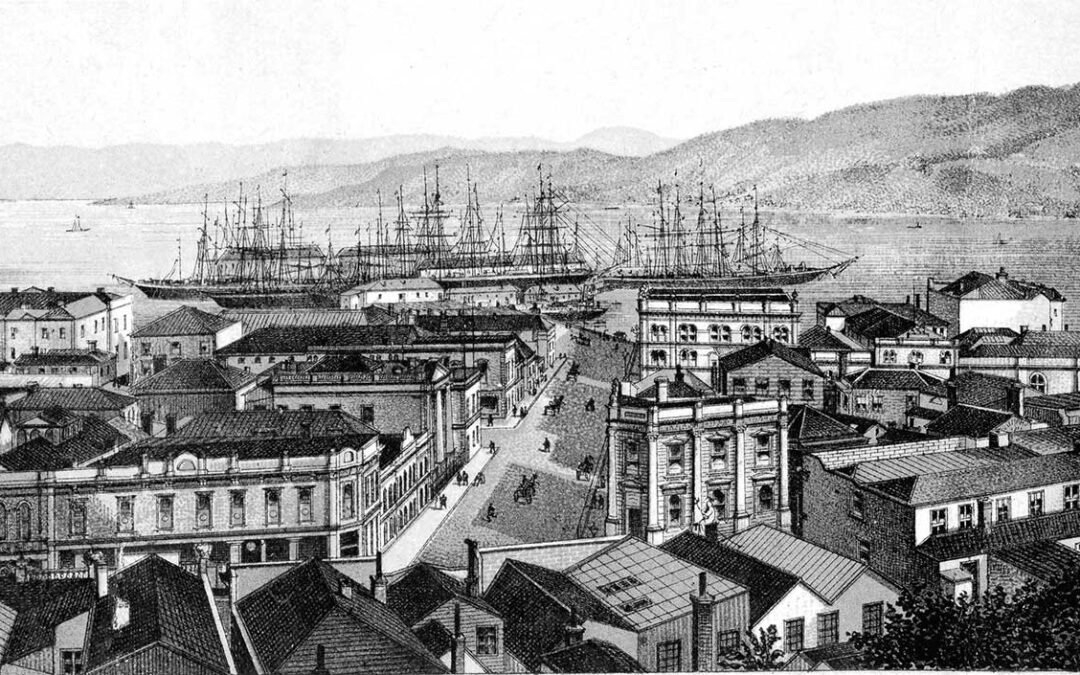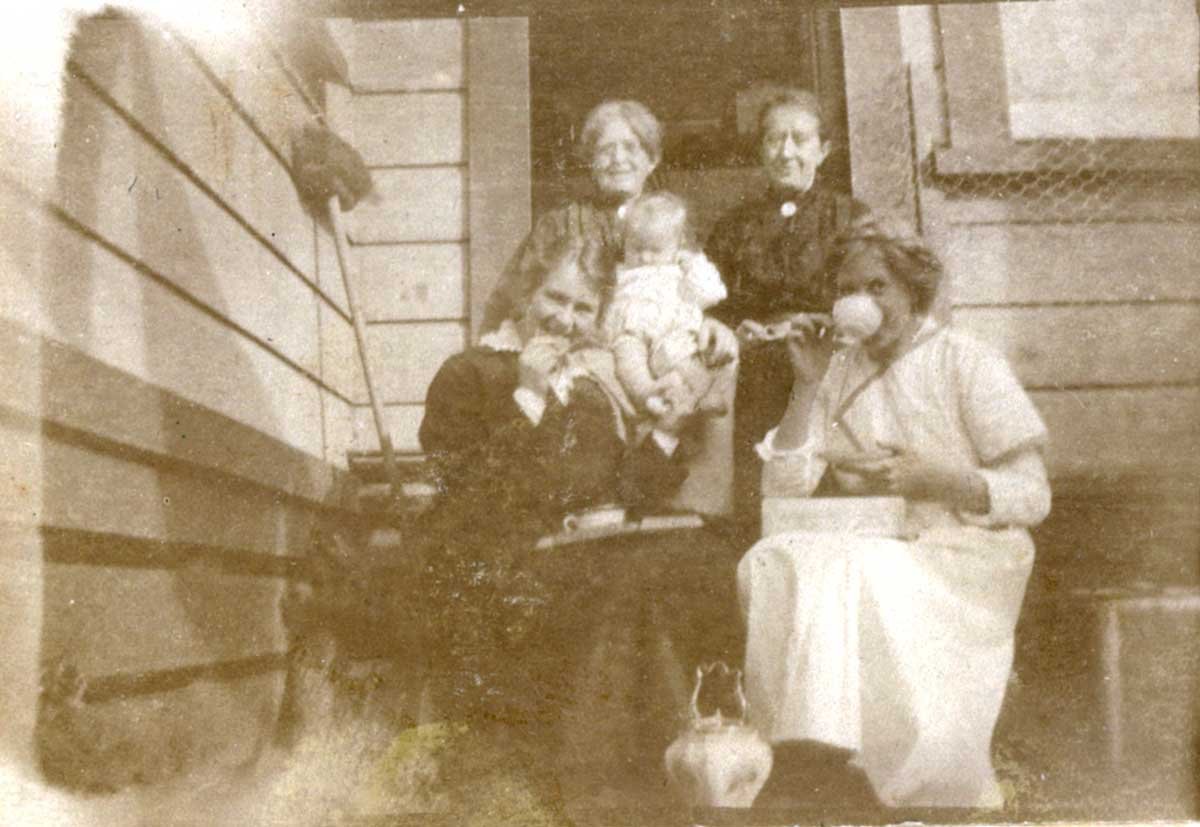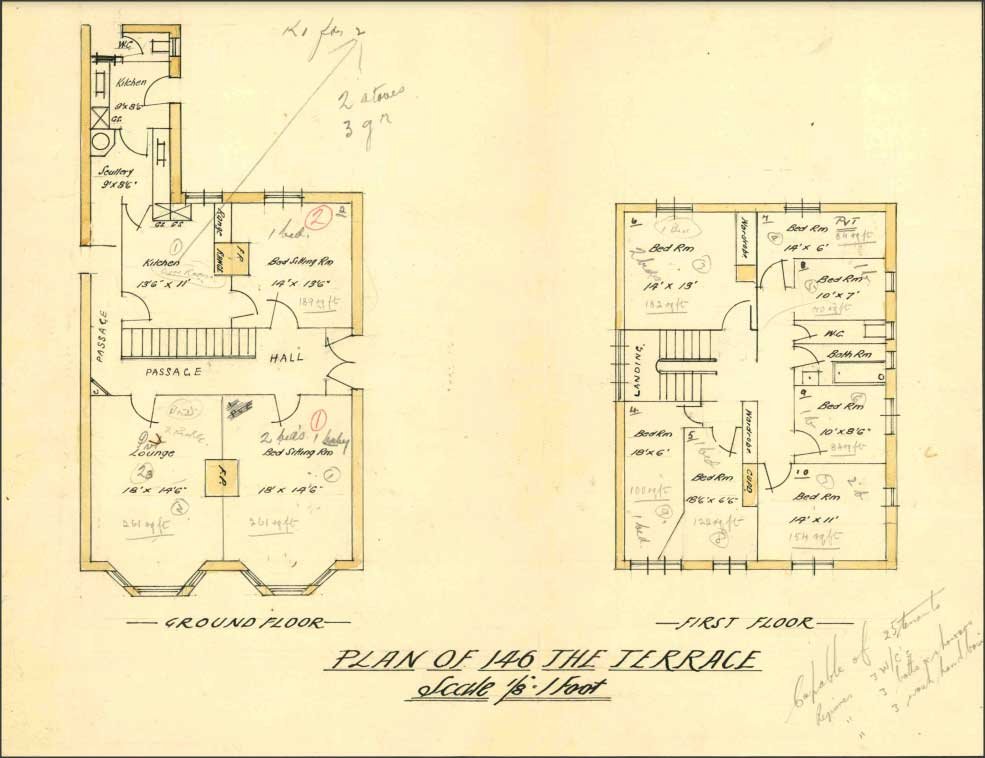This is the fourth post in my search to uncover the lives of my spinster aunts who lived in Wellington between 1915 and 1942. They may have run a cake shop, but they definitely ran boarding houses.
If you’re interested in learning all the ins and outs of how we got to where we are today, here is Part One; Part Two; and Part Three. But you can probably just skip them and read the TL;DR below for a catch-up instead.
This will probably be the last post on these ladies until I can get to Wellington and see records that can only be accessed in person.
A plain-text file containing the transcriptions of text images in this post is available here.
TL;DR
When I began my search, all I had were two sentences in a book written by my grandmother in the early 1990’s:
“Phoebe Smith had three sisters – Polly, Florence (‘Florrie’) and Sarah Elizabeth Smith who came out to New Zealand where they opened a cake shop in Wellington. They were fine pastrycooks.”
Finding My Roots, by Pat Jenkins (Palmerston North, 1994)
What can I say? I really like cake. I’ve been curious about these women for more than 25 years. And so I began metaphorically digging them up from their literal graves.
Sarah Elizabeth, Mary Ann (Polly), and Florence (Florrie) Smith were born in Burnley, Lancashire in 1860, 1866, and 1870 respectively. At the beginning of the First World War, Sarah and Polly ran a cake shop in Burnley, while Florence had a craft store selling wool and “fancy things”.
When war broke out, they decided to join their sister Phoebe (my great-great grandmother) and a few of her children and grandchildren in New Zealand. They arrived in Wellington on 15 September 1915 on the ship Rimutaka.
A letter from their niece revealed they left England with the intention of running a boarding house. They leased or purchased a property at 146 The Terrace where they began doing just that.
Unfortunately, 146 The Terrace was demolished in 1971 to create the motorway offramp. If you’re ever driving it, look to the left at the lights as you turn onto The Terrace. That’s about where it was.
In the photo collection of Dorothy Simkin I came across these photos captioned “Grandma (Phoebe Lomas), Aunt Sarah, Dorothy, Clark and Miss Webb“. These are the only confirmed photos I have of the Smith sisters – and even then, only Sarah (top right in both). Dorothy was born in June 1916, so these photos were probably taken in the 12 months before Sarah’s passing in November 1917. These images have been professionally scanned and restored. Click to expand.
In November 1917 – two years after arriving – Sarah passed away, probably quite suddenly at the age of 57. Florrie purchased a plot at Karori Cemetery for her remains. She was followed by Polly in 1941, and Florrie in 1942. They are buried in the plot together.
The Friends of Karori Cemetery kindly trekked out to that grave and checked it out for me. They also applied for consents and tidied it up – a final wish discovered in Florrie’s will.

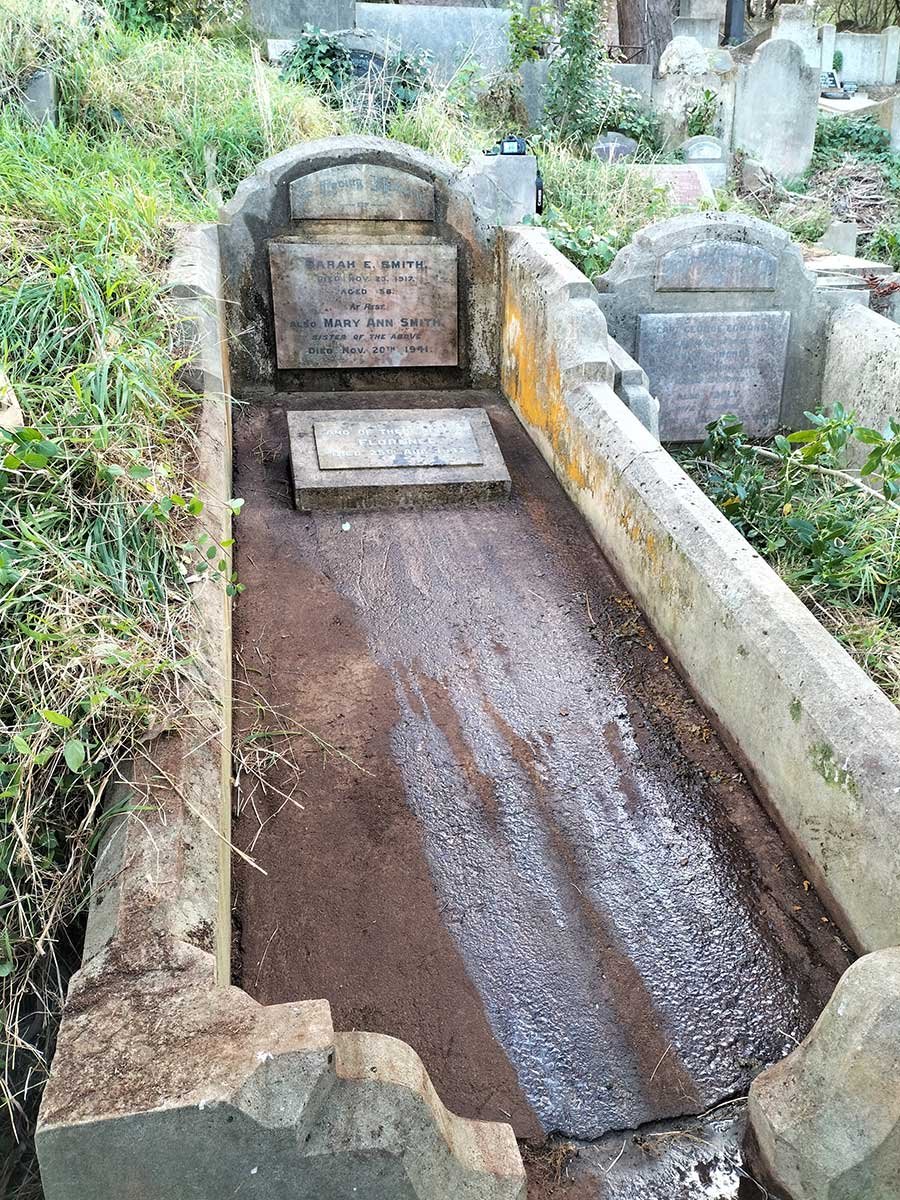
Before and after. The Smith sister’s grave not long after I ‘found’ them in March 2022, and April 2022, after the Friends of Karori Cemetery tidied it up during a working bee.
Their grave is what really acted as the springboard for the rest of this search, and remains the only physical evidence of the sisters’ lives at all.
146 The Terrace
I still haven’t found a photo of the boarding house. I tried to find a land title but failed. I even engaged someone at LINZ to see what else could be found and they failed too. But they did tell me that Wellington City Council have an Archive, and that was a really helpful piece of information.
Adrian – the archivist at the Wellington City Council Archive – believed the building was probably built before 1880, but could not be more specific. The map towards the end of this set of nearby planning applications (dated 1880) shows the frontage of a house located at 146 – indicating it was there before this particular planning application began.
From Thomas Ward’s 1892 survey of Wellington City, I learned the boarding house was a two story, 5 bedroom wooden building with a shingle roof.

146 The Terrace (pink) as shown on Thomas Ward’s 1892 map of Wellington, with map key (Sheet 26, via Wellington City Council Archives).
But the real motherloade was the 1946 fire and evacuation records for 146 The Terrace, where I got a house layout.
Layout of the boarding house at 146 The Terrace, 1946-1972 (Page 43, via Wellington City Council Archives).
Of course, all three sisters had passed away by 1946, and hadn’t lived at The Terrace at all in the 20 years before this record began. But it still provides an insight into how the boarding house might have run.
The first boarding house
There are 238 mentions of the address on Papers Past between 1915 and 1925. I went through all of them.
Bedrooms were frequently shared – up to three people in a room. It was co-ed, sometimes advertising for ‘business girls’, and other times for ‘gentlemen’. Some of the rooms had their own fireplace, and electric light was available. There was one bathroom for the entire house. The plans for the boarding house show it could have slept up to around 14 in 1942.
Most likely the sisters shared a room – I think the one with a fireplace off the kitchen – and rented the rest out. They offered board or breakfast additionally.
While most of the results for 146 The Terrace are about advertising rooms, a few of them give a glimpse into who stayed at the boarding house (plain text transcriptions here).


Evening Post, 23 August 1922, page 1. Via Papers Past.
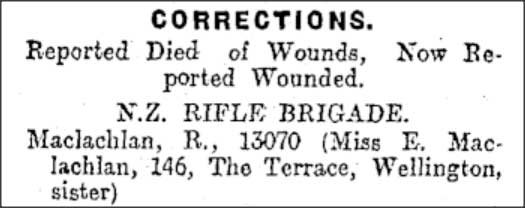
The seamstress made me wonder if my aunts had their own blouses made while she was there.
An injured soldier’s sister was fairly easy to track through his war records – she moved around a bit, and probably stayed at the boarding house just after moving from Auckland, before settling in with a job at the Audit Office.
I don’t know what that suitcase is about, but I also can’t not include it.
There was a small spate of lost jewelry. It happens over a course of years. It might just be a big coincidence – and impossible to prove – but a part of me suspects all three of these are all related to one of the sisters. For reasons I can’t explain, my money is on Polly (plain text transcriptions here).
Evening Post, 10 April 1917, page 1. Via Papers Past.
Views of the harbour
In her notes, my grand aunt Dorothy mentioned a few things about the boarding house on The Terrace, but the bit that stands out to me is her description of seeing the harbour.
“When we visited them about 1924 they had a two-storied boarding house in Shortland Street (I think). They could see the wharves from their house on the hill.”
Excerpt from letter from Dorothy Simkin to Lloyd Jenkins 1980s
Dorothy would have been aged 8-10 for this visit. Memories at that age swirl together and can’t always be trusted – I know that is true for myself and assume it to be true for others. She wasn’t on Shortland Street. But I believe she saw the wharves on the harbour.
To prove it, I took Thomas Ward’s (updated) 1900 maps of Wellington and stitched them together to see how that panned out.
Without the office blocks, hotels, and carparks in the way, I think it’s safe to say Dorothy did in fact look out the living room window of 146 The Terrace and see the harbour as a child.
More recently, I stumbled across the image shown at the top of this post through the Wellington City Libraries Recollect website. It is captioned “A view from an elevated position on The Terrace looking down Grey Street towards Queens Wharf with Oriental Bay in the background” and dated 1883.
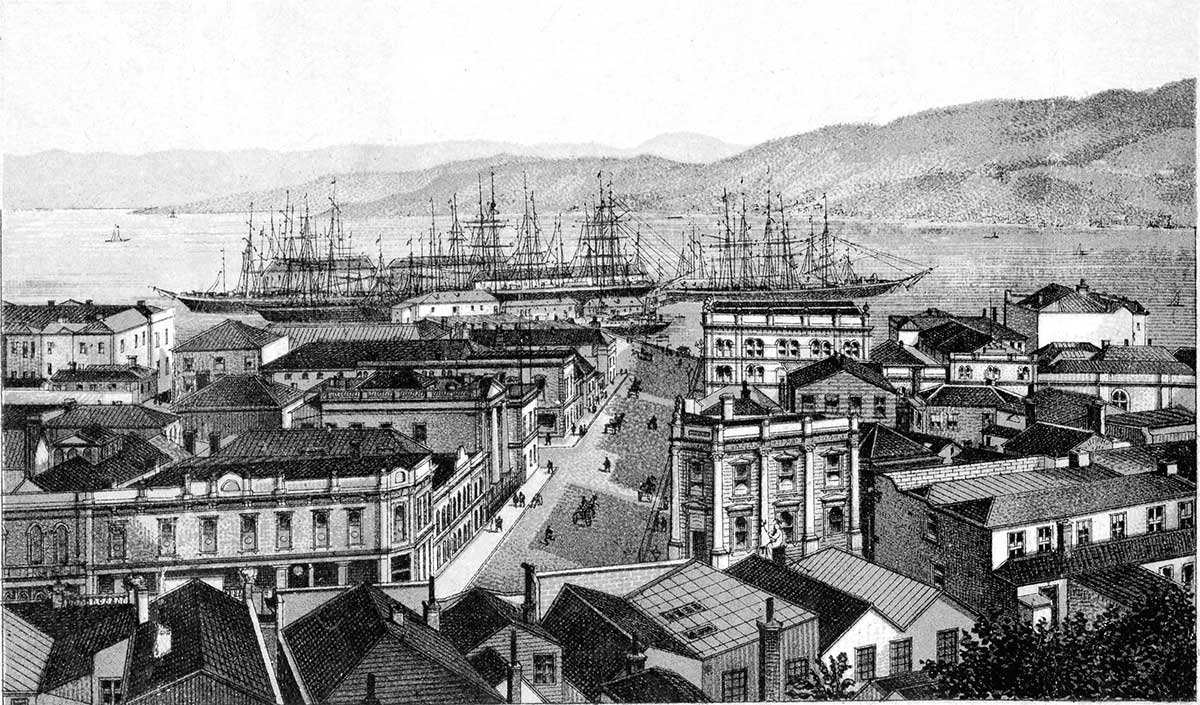
Grey Street & Queens Wharf by Eberle & Schnotzinger, 1883. CC-NC-ND 3.0. Via Wellington City Recollect.
Here’s that image again: comparing Thomas Ward’s map to the description of the image, it’s more or less what Dorothy would have seen out the window.
41A Majoribanks Street
In 1925, Electoral Roll records show Florence Smith moving to 41A Majoribanks Street. Mary Ann’s death print-out shows her living at this address in 1941.
41a Majoribanks Street is not a street-facing property. It’s closer to Fallowfield Avenue off Roxburgh Avenue. When looking at it on Google, you don’t see that because it has since become part of an apartment complex, but you do when you order the property title from LINZ.
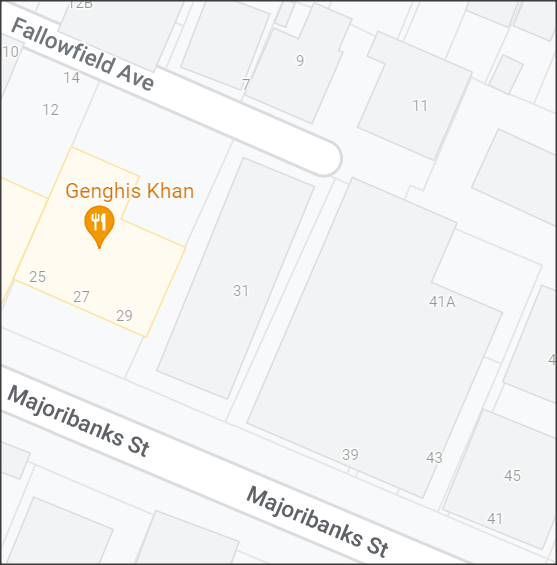
41a Majoribanks Street as shown on Google Maps.
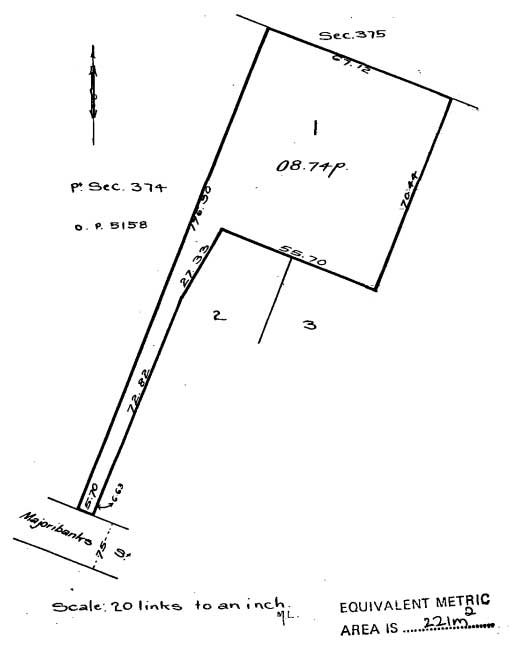
41a Majoribanks Street property boundary from the historical title.
The historic property title shows a Florence Smith, spinster of Wellington purchasing 41A Majoribanks Street on 7th July 1925.
The mortgage
There was a mortgage on the property. It was increased in 1927; and possibly transferred to a new mortgager in 1929.
Terms were changed during The Great Depression of the 1930’s with an extension and reduction of interest in 1932; followed by a variation in 1937.
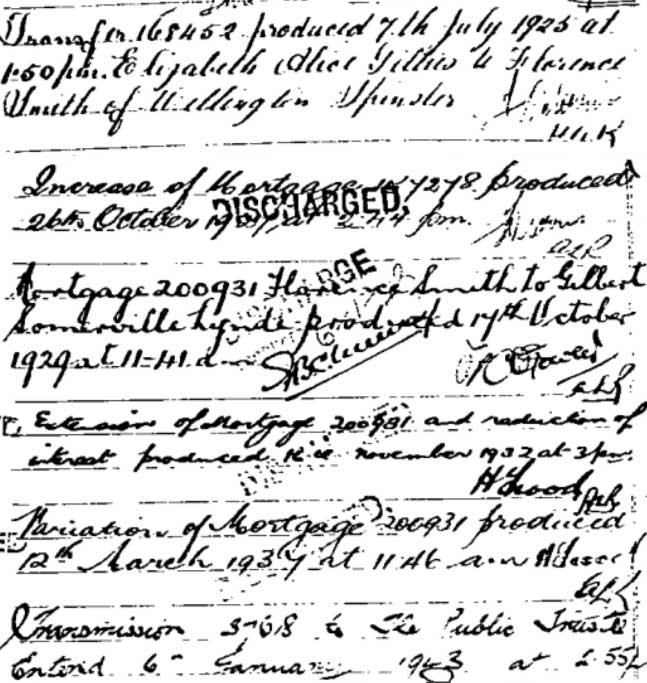
The ownership details from the historical property title for 41a Majoribanks Street. Plain text transcriptions are available here.
The (second?) mortgager, Gilbert Sommerville Lynds was an Englishman who lived in New Zealand between 1925 and 1930 working on our rail network as Chief Railways Engineer.
He served as a British engineer during WWI, attaining an O.B.E. for his service. Before New Zealand, it appears he did work in Canada, and after New Zealand, it looks like he went to Ghana. So a Commonwealth train-guy. He’s the man you can thank for emergency brakes in New Zealand’s passenger trains.
I’m not sure how they knew each other, but Gilbert does originally come from Lancashire, so maybe it was ‘from home’; or perhaps church in Wellington – when I get to Wellington to look at membership lists, I’ll be looking for him too.
Florence’s nephew George Ernest Lomas also worked on railways in the UK and New Zealand, but died in 1921 – it’s possible (but I think unlikely) this was the link.
Either way, it was awfully nice of Gilbert to loan a couple of spinster sisters the funds to purchase (or retain) a house. If Florrie had been married, she would only have been able to own this property with her husband’s permission – but as a spinster, there were no restrictions. Still, I’m sure finding finance was it’s own set of problems.
The property is transferred to The Public Trustee about four months after Florrie passed away, and sold a week later in January 1943.
The weird bit
There’s a weird piece of the timeline. In 1925, Florence purchases Majoribanks Street – but it does not appear the sisters run it as a boarding house until the second half of 1930.
Thomas Ward’s map of Wellington shows the 41A Majoribanks Street was a 5 bedroom single-story wooden house with an iron roof. The 1937 housing survey shows it to be in satisfactory condition (pink), with overcrowded bedrooms (brown), and that there was a separate ‘apartment house’ (green).

41a Majoribanks Street (orange) as shown on the 1900 (updated) Thomas Ward maps of Wellington. Sheet 52, via Wellington City Council Archives.
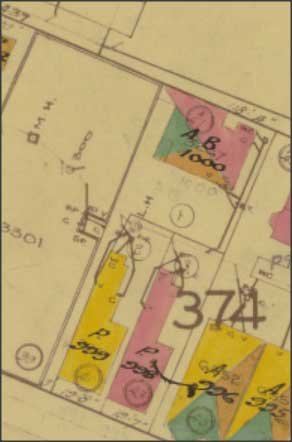
Over at Papers Past, only one To Let ad appears between 1925 and 1930 – for a furnished two bedroom flat. Ads for boarders in a ‘family home’ only start appearing around September 1930. So if they weren’t running a boarding house what were they up to?
Polly would have been aged 59-64 during this period, and Florrie would be 55-60. Too young to retire, even with a lower retirement age, unless renting the flat alone was enough to sustain them.
Whatever happened during this time, it seems to have ended when the The Depression hit at the end of the 1920’s. Ads for boarders at Majoribanks Street begin in September 1930.
There’s other things it could be – perhaps there are ads that ran at the time which are not included in the online database for whatever reason. Maybe they just went and got some jobs for a while.
But it does make me wonder… is this a lead on the mythic cake shop?
Still looking for that cake shop
On one hand: perhaps we are close to discovering the fancy cakes. 1925-1930 was a relatively prosperous time to try again with a cake shop. It’s the best window we’ve got. And there’s no evidence so far to say they were up to much else at the time.
Even though Sarah was the real talent with cakes, I don’t think it’s likely the shop was set up during WWI. Especially after leaving England to get away from the resulting downturn in business (their motivations are discussed in more depth in Part Three of this series). Sarah died in 1917, before the end of the war.
The Depression and WWII don’t make much sense either. So opening somewhere around 1925 or 1926, closing during the early stage of The Depression – that makes sense to me. The house could be used as collateral – the mortgage was increased in 1927.
On the other hand, I’m beginning to wonder if the Wellington cake shop is a phantom. I believe they knew how to make a smashing cake. I believe Sarah ran a cake shop in Burnley with Polly as her assistant before they came to New Zealand.
During a recent ‘free weekend’ on Newspapers.com, I looked into the Burnley cake shop a little more. It looks like a few confectionery businesses may have been up for sale prior to their departure. There’s no proof to link any of these ads to the sisters for sure, but they fit the timeline and the narrative.

Businesses for sale in the Burnley Express, 23 June 1915 – not long before the sisters immigrated to New Zealand. Sarah generally referred to herself as a ‘confectioner’ at the time, while Florrie had a more ‘general’ business. Plain text transcriptions here.
But the only evidence that supports the idea they ran a cake shop in Wellington is a random hole in the timeline (that could be explained in a number of ways), and what basically equates to family legend. At some point, you have to ask yourself how reliable is that information?
I’m going to keep looking – focusing on this gap in the timeline – but I’m not entirely sure I’m going to find what I’m looking for.
So far, the evidence for a cake shop – at least in Wellington – is a bit weak.
The Depression and the second boarding house
Boarding houses seem considerably more likely as the sister’s primary New Zealand income stream. From 1930 to their deaths, it appears Polly and Florrie rented out their two spare bedrooms at 41A Majoribanks Street, as well as the separate self-contained flat.
Here, they offered an optional ‘tray’ – which I interpret as meaning they provided breakfast. They did washing too.
They ran one room with two single beds for 10 shillings (about $50 in today’s money) each. Sometimes they advertised specifically for men, sometimes for ‘business girls’. Another room was run as a single for between 22s, 6d ($120) and 25s ($130).
The flat was furnished and had a separate entrance, two bedrooms, an (electricity?) meter, and a kitchenette.
That means they were renting 4 of the 5 bedrooms out, but assumedly bringing in a pretty good income off them.

Evening Post, 20 November 1941, page 1. Via Papers Past. Plain text trascriptions here.
After Polly’s death in 1941, the ads change a little. In the flat, Florrie was looking for a ‘quiet elderly couple‘, and suddenly a room with a fireplace was available for a ‘business lady’. Perhaps at this point, Florrie switched rooms.
The ads end in May 1942. Florrie passed away in August.
Despite dying during WWII, just after The Great Depression, her final estate was valued at around $250,000 in 2022’s money.
Forgotten, but not gone
The benefactors of Florrie’s will were all related via her sister Phoebe Lomas (nee Smith, my great-great grandmother). Reading the names on that will is how I knew for sure I had found the sisters to begin with.
Florrie’s nephew, nieces, and the wife/widow of two nephews each inherited a share. Some remained in New Zealand, but it was also sent back to England.
In some way, I am sure I have benefited from the lives of Sarah, Polly, and Florrie through intergenerational-wealth. They have touched my life in gentle ways I was never even aware of.
For nearly 60 years, they’ve laid in Karori, barely remembered but for a few hazy memories that were edited down to two sentences in a book with a print run of less than 50.
Those sentences first crossed my eyes in 1994, and it has taken me until 2022 to find the Smith sisters and uncover even a few fragments of their lives.
May they be remembered just a little bit longer.
Acknowledgements
A collection of wonderful people have helped me get this far. In the wider scheme of things I’d like to thank Lloyd Jenkins; Pat Jenkins; Madge Greenfield; Dorothy Simkin; Louise Simkin; Paul Simkin; and Friends of Karori Cemetery – each has provided a piece of the puzzle that has moved us slightly closer.
For this post specifically, acknowledgements must be given today to Adrian at Wellington City Council Archives who I unwittingly dragged into this sometimes frustrating and fruitless search; and who responded with anything and everything that might possibly be relevant. We know as much about the boarding houses as we do because Adrian is a legend.
Also to Graeme McClare of the New Zealand Railway and Locomotive Society who very kindly sent me information on Gilbert Sommerville Lynds.
And to Jo at Land Information New Zealand who tried her very best to track down the historic land title for 146 The Terrace and ended up sending me to Adrian.
Header image: Grey Street & Queens Wharf by Eberle & Schnotzinger, 1883. CC-NC-ND 3.0. Via Wellington City Recollect.

